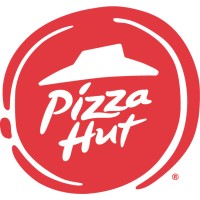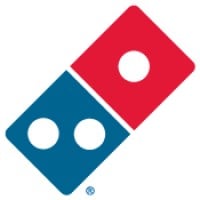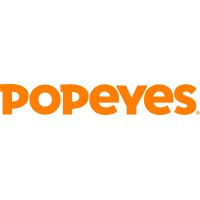
KFC US Company Cyber Security Posture
kfc.comKFC Corporation, based in Louisville, Kentucky, is one of the few brands in America that can boast about having a rich, 60-year history of success and innovation. In fact, KFC is the world's most popular chicken restaurant chain and a division of Yum! Brands, the world’s largest restaurant company. Yum! Brands, Inc., based in Louisville, Kentucky, is one of the world’s largest restaurant companies with nearly 43,000 restaurants in more than 130 countries and territories. Yum! Brands is ranked #228 on the FORTUNE 500 list with revenues of more than $13 billion and in 2015 was named one of the Aon Hewitt Top Companies for Leaders in North America. Our restaurant brands – KFC®, Pizza Hut® and Taco Bell® – are the global leaders of the chicken, pizza and Mexican-style food categories. More important than our size is our commitment to breakthrough innovation and the success of our employees. We're proud of the unique culture we've built, one where everyone can be their best self, make a difference and have fun! We believe in our people, trust in their positive intentions, encourage ideas from everyone, and have actively developed a workforce that is diverse in style and background.
KFC US Company Details
kfc-us
15916 employees
134879.0
722
Restaurants
kfc.com
Scan still pending
KFC_1518495
In-progress
Between 900 and 1000
This score is AI-generated and less favored by cyber insurers, who prefer the TPRM score.
 KFC US Global Score
KFC US Global Score.png)

KFC US Company Scoring based on AI Models
| Model Name | Date | Description | Current Score Difference | Score |
|---|---|---|---|---|
| AVERAGE-Industry | 03-12-2025 | This score represents the average cybersecurity rating of companies already scanned within the same industry. It provides a benchmark to compare an individual company's security posture against its industry peers. | N/A | Between 900 and 1000 |
KFC US Company Cyber Security News & History
| Entity | Type | Severity | Impact | Seen | Url ID | Details | View |
|---|---|---|---|---|---|---|---|
| Yum! Brands | Breach | 60 | 3 | 04/2023 | YUM33429523 | Link | |
Rankiteo Explanation : Attack with significant impact with internal employee data leaksDescription: Yum! Approximately 300 restaurants in the UK were closed for one day as a result of a cyberattack that Brands had to endure that required the company to shut down its systems. The exposed information includes names, driver’s license numbers, non-driver Identification Card Number, and other types of personal identifiers. The company investigated the security breach with the help of third-party cybersecurity experts, to identify the scope of the incident. They investigated the incident and also provided complimentary credit monitoring and identity protection services for two years via IDX. | |||||||
KFC US Company Subsidiaries

KFC Corporation, based in Louisville, Kentucky, is one of the few brands in America that can boast about having a rich, 60-year history of success and innovation. In fact, KFC is the world's most popular chicken restaurant chain and a division of Yum! Brands, the world’s largest restaurant company. Yum! Brands, Inc., based in Louisville, Kentucky, is one of the world’s largest restaurant companies with nearly 43,000 restaurants in more than 130 countries and territories. Yum! Brands is ranked #228 on the FORTUNE 500 list with revenues of more than $13 billion and in 2015 was named one of the Aon Hewitt Top Companies for Leaders in North America. Our restaurant brands – KFC®, Pizza Hut® and Taco Bell® – are the global leaders of the chicken, pizza and Mexican-style food categories. More important than our size is our commitment to breakthrough innovation and the success of our employees. We're proud of the unique culture we've built, one where everyone can be their best self, make a difference and have fun! We believe in our people, trust in their positive intentions, encourage ideas from everyone, and have actively developed a workforce that is diverse in style and background.
Access Data Using Our API

Get company history
.png)
KFC US Cyber Security News
How Raising Cane's overtook KFC to become the No. 3 chicken chain in the U.S.
Raising Cane's is now the third-largest chicken chain in the U.S. by sales, trailing only Chick-fil-A and Popeyes.
Serving Up Good: How This KFC U.S. Restaurant Manager Is Using Her Passion for Fundraising To Improve Her Community
Shanel F. and her restaurant team members celebrated being named the top store in the U.S. for fundraising by hosting an in-store party.
KFC security breach leaks user information
Fast food giant KFC e-mailed the 1.2 million members of its Colonel”s Club Loyalty program in the UK, asking them to immediately change their passwords.
People Moves: Katie Arrington
Big industry moves include execs taking on roles at SAP, Snowflake, the US Department of Defense & Yum! Brands, home to brands including KFC ...
KFC U.S. Is Moving Headquarters to Irvine, California and Plano, Texas
The decision will relocate the KFC US corporate headquarters from Louisville, Ky., to the Plano office, where the KFC and Pizza Hut Global teams currently ...
Yum Brands reports surprise fall in global sales amid KFC's struggles in US
Excluding items, Yum earned $1.37 per share in the third quarter ended Sept 30. Analysts on average were expecting a profit of $1.41 per share.
KFC owner suffers data breach following ransomware attack | Cyber Security Hub
US fast-food corporation Yum! Brands, which owns franchises including KFC, Pizza Hut and Taco Bell, has suffered a data breach following a ransomware attack.
KFC, Taco Bell parent company expands AI efforts amid broader transformation
Yum Brands, which owns KFC and Pizza Hut, is working to integrate and scale reinforcement learning, an ML approach that trains models to respond ...
KFC moves U.S. headquarters from Kentucky to Texas
KFC is moving its U.S. headquarters from Louisville, Kentucky, to Plano, Texas. Parent company Yum Brands is calling remote workers back to the ...

KFC US Similar Companies

Restaurantes TOKS
El primer restaurante se abrió en el año 1971, somos más de 8,000 colaboradores distribuidos en más de 100 unidades de negocio a nivel nacional y un corporativo conformado por las áreas de: Recursos Humanos Jurídico Contraloría Sistemas Operaciones Producción Mercadotecnia Responsabilida

Pizza Hut
Pizza Hut, a subsidiary of Yum! Brands, Inc. (NYSE: YUM), was founded in 1958 in Wichita, Kansas, and since then has earned a reputation as a trailblazer in innovation with the creation of icons like Original® Pan and Original® Stuffed Crust pizzas. In 1994, Pizza Hut pizza was the very first online

Domino's
What’s behind one of the world’s top public restaurant brands? Fun and innovative franchise and corporate team members who are driven to win. Inspired to make each day better than the last, people may join for different reasons but what motivates them to stay are the passionate and talented colleagu

Pacific Bells
Welcome to our Restaurant Family. We're Pacific Bells, a Franchisee of Taco Bell. We operate over 260 Restaurants in 9 States and have a lot more growth in the works. Pacific Bells, LLC was founded by Dennis and Anna in January 1986. After establishing their first store in Tualatin, Oregon, which i

Popeyes Louisiana Kitchen
Founded in New Orleans in 1972, POPEYES® has more than 45 years of history and culinary tradition. Popeyes distinguishes itself with a unique New Orleans-style menu featuring spicy chicken, chicken tenders, fried shrimp, and other regional items. The chain's passion for its Louisiana heritage and fl

Olive Garden
Founded in 1982, Olive Garden is owned by Darden Restaurants, Inc. (NYSE:DRI), the world's largest company-owned and operated full-service restaurant company. With more than 800 restaurants, more than 92,000 employees and more than $3.5 billion in annual sales, Olive Garden is the leading restaurant

Frequently Asked Questions
Explore insights on cybersecurity incidents, risk posture, and Rankiteo's assessments.
KFC US CyberSecurity History Information
How many cyber incidents has KFC US faced?
Total Incidents: According to Rankiteo, KFC US has faced 1 incident in the past.
What types of cybersecurity incidents have occurred at KFC US?
Incident Types: The types of cybersecurity incidents that have occurred incident Breach.
How does KFC US detect and respond to cybersecurity incidents?
Detection and Response: The company detects and responds to cybersecurity incidents through third party assistance with Third-party cybersecurity experts and remediation measures with Complimentary credit monitoring and identity protection services for two years via IDX.
Incident Details
Can you provide details on each incident?

Incident : Cyberattack
Title: Cyberattack on Yum! Brands
Description: Approximately 300 restaurants in the UK were closed for one day as a result of a cyberattack that Yum! Brands had to endure, requiring the company to shut down its systems.
Type: Cyberattack
What are the most common types of attacks the company has faced?
Common Attack Types: The most common types of attacks the company has faced is Breach.
Impact of the Incidents
What was the impact of each incident?

Incident : Cyberattack YUM33429523
Data Compromised: names, driver’s license numbers, non-driver Identification Card Number, other types of personal identifiers
Downtime: One day
Operational Impact: 300 restaurants closed
Identity Theft Risk: High
What types of data are most commonly compromised in incidents?
Commonly Compromised Data Types: The types of data most commonly compromised in incidents are names, driver’s license numbers, non-driver Identification Card Number and other types of personal identifiers.
Which entities were affected by each incident?
Response to the Incidents
What measures were taken in response to each incident?

Incident : Cyberattack YUM33429523
Third Party Assistance: Third-party cybersecurity experts
Remediation Measures: Complimentary credit monitoring and identity protection services for two years via IDX
How does the company involve third-party assistance in incident response?
Third-Party Assistance: The company involves third-party assistance in incident response through Third-party cybersecurity experts.
Data Breach Information
What type of data was compromised in each breach?

Incident : Cyberattack YUM33429523
Type of Data Compromised: names, driver’s license numbers, non-driver Identification Card Number, other types of personal identifiers
Sensitivity of Data: High
Personally Identifiable Information: True
What measures does the company take to prevent data exfiltration?
Prevention of Data Exfiltration: The company takes the following measures to prevent data exfiltration: Complimentary credit monitoring and identity protection services for two years via IDX.
Investigation Status
What is the current status of the investigation for each incident?

Incident : Cyberattack YUM33429523
Investigation Status: Investigation completed
Post-Incident Analysis
What is the company's process for conducting post-incident analysis?
Post-Incident Analysis Process: The company's process for conducting post-incident analysis is described as Third-party cybersecurity experts.
Additional Questions
Impact of the Incidents
What was the most significant data compromised in an incident?
Most Significant Data Compromised: The most significant data compromised in an incident were names, driver’s license numbers, non-driver Identification Card Number and other types of personal identifiers.
Response to the Incidents
What third-party assistance was involved in the most recent incident?
Third-Party Assistance in Most Recent Incident: The third-party assistance involved in the most recent incident was Third-party cybersecurity experts.
Data Breach Information
What was the most sensitive data compromised in a breach?
Most Sensitive Data Compromised: The most sensitive data compromised in a breach were names, driver’s license numbers, non-driver Identification Card Number and other types of personal identifiers.
Investigation Status
What is the current status of the most recent investigation?
Current Status of Most Recent Investigation: The current status of the most recent investigation is Investigation completed.
What Do We Measure?
















Every week, Rankiteo analyzes billions of signals to give organizations a sharper, faster view of emerging risks. With deeper, more actionable intelligence at their fingertips, security teams can outpace threat actors, respond instantly to Zero-Day attacks, and dramatically shrink their risk exposure window.
These are some of the factors we use to calculate the overall score:
Identify exposed access points, detect misconfigured SSL certificates, and uncover vulnerabilities across the network infrastructure.
Gain visibility into the software components used within an organization to detect vulnerabilities, manage risk, and ensure supply chain security.
Monitor and manage all IT assets and their configurations to ensure accurate, real-time visibility across the company's technology environment.
Leverage real-time insights on active threats, malware campaigns, and emerging vulnerabilities to proactively defend against evolving cyberattacks.




